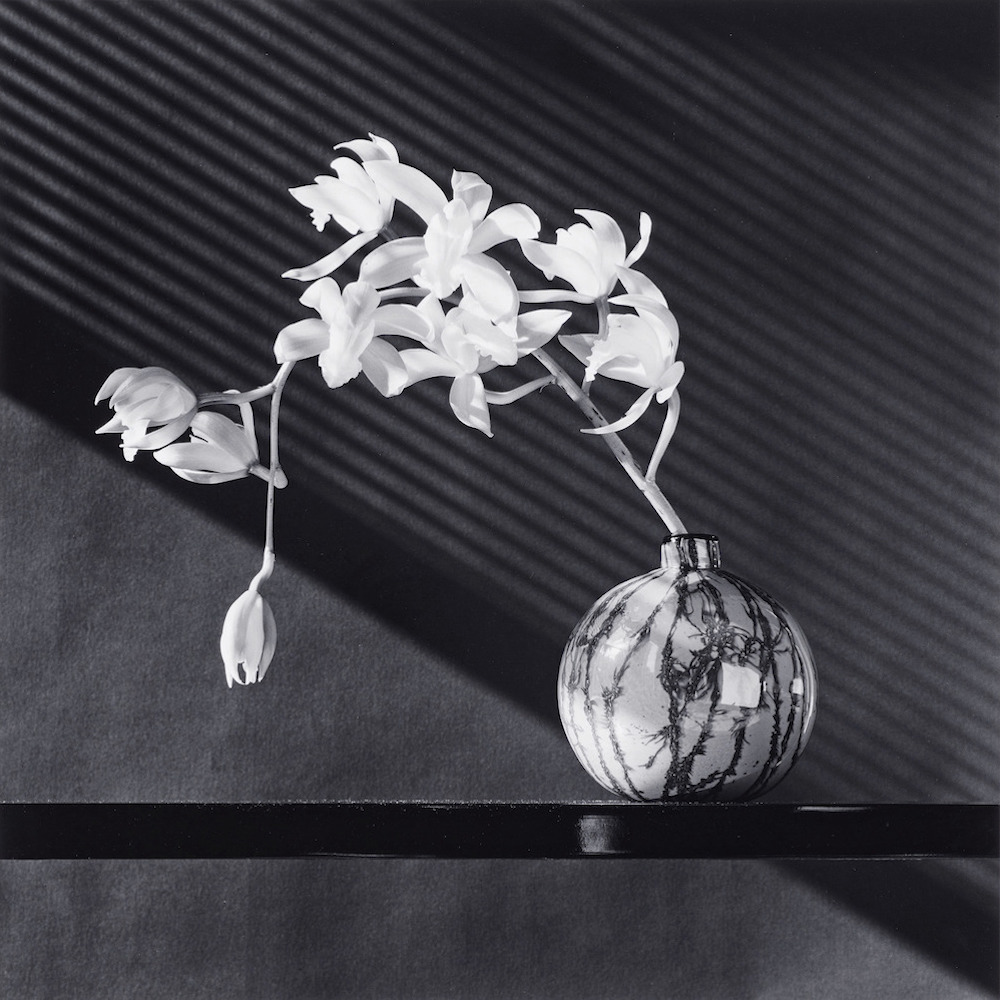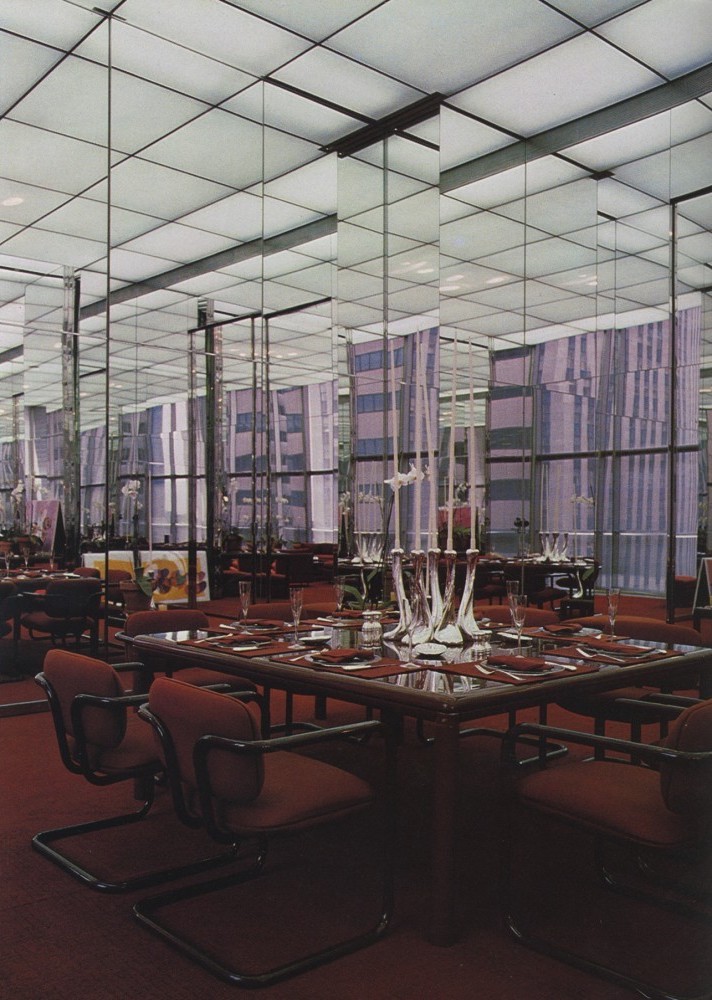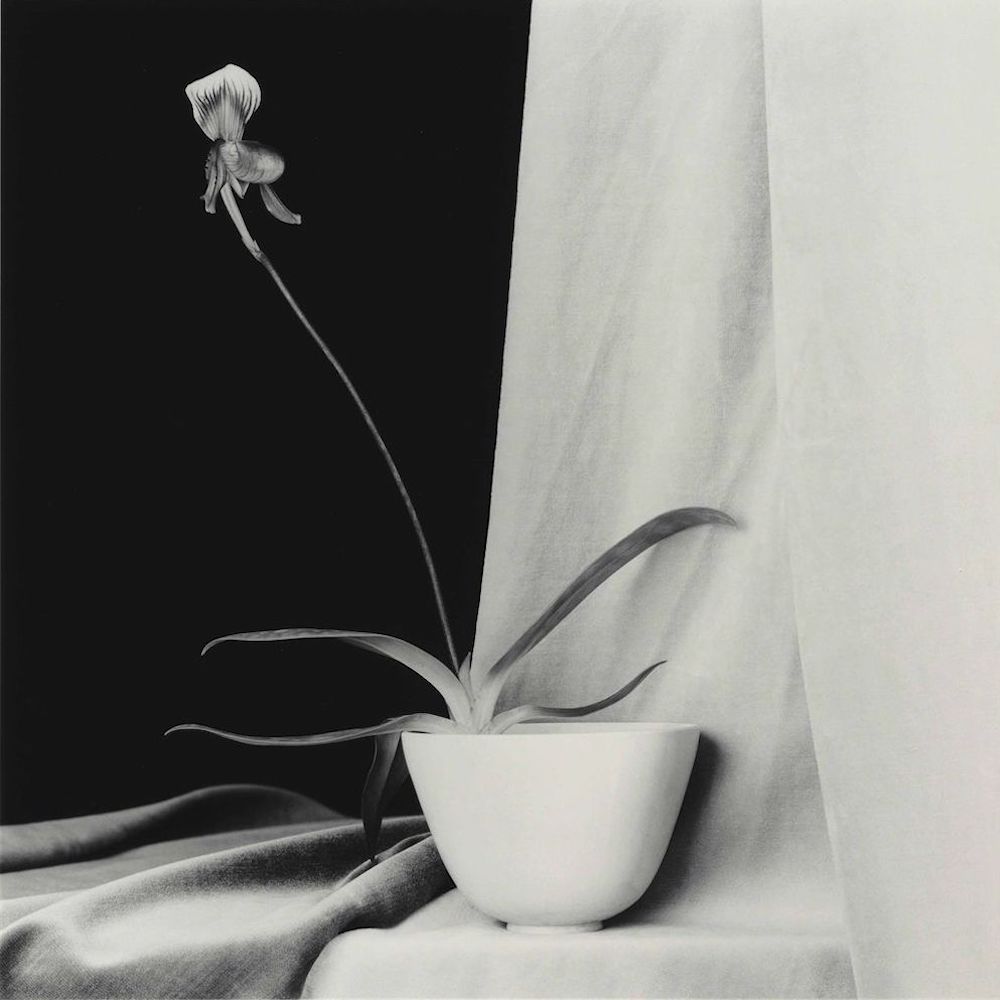HALSTON'S FLORAL MUSE
Orchid Etiquette, Cultivation Secrets, & The Most Prized Varieties
Written by Nishit Atulkumar Soni
"You can't put a budget on inspiration."
declared Roy Halston in a moment of elegant defiance when pressed by an executive to trim flower expenses. Such sentiment, as Halston deemed, was undeniably true.
"Orchids" from the series of flower photography by Robert Mapplethorpe, 1987.
In the world of high fashion, where creativity blooms and fades away like a delicate flower, there are but a very few designers who've etched their presence as deeply as Halston. Halston, the Midwestern maestro whose love affair with orchids was as legendary as his iconic designs, ensured that orchids adorned every corner of his glamorous runways and the minimalistic rooms of his architectural marvel of a townhouse on Manhattan’s East 63rd Street, as well as his lofty Olympic Tower Office on the 21st floor at Fifth Avenue, serving as his floral muse.
Halston's fascination with orchids traces back to his mentor, the enigmatic Charles James, a figure revered for his impeccable taste and uncompromising vision. At the dawn of his career, Halston briefly collaborated with James, further enriching their creative bond; however, they eventually parted ways due to interpersonal differences. As Halston's biographer, Steven Gaines, reveals in his book, it was under James's influence that the budding designer developed an appreciation for these exquisite blooms, which soon became synonymous with his own style. “Orchids were all over his place, both at home and in the office,” recalls Gaines “Back then, orchids were really expensive and not plentiful. Only the rich could afford them.”
Norman McGrath's 1981 photograph offers a peek into Halston's office at the Olympic Tower, featuring a dining room adorned with glassware, dishware, and tableware from Tiffany's, the preferred setting for his regular luncheons.
"Up until Halston, orchids were treated like champagne, something very occasional and limited. But Halston made them seem like not a rarity but a necessity. They looked just amazing—sensuous without being romantic, and floral without being flowery,” reflected decorator Jeffrey Bilhuber to Vogue in the year 1988.
Even Andy Warhol, the arbiter of cool, who was also among Halston’s inner circle, couldn't help but be impressed by the abundance of orchids in Halston's domain. "It looked so rich at Halston’s," Warhol noted in his later-to-be-famous diary, "so many orchids, so cool, the girl running around with their brand-new luggage."
According to an interview given by Bob Colacello to The New York Times in 1998, Halston used to mark the birthdays of his inner circle in an unconventional style. Alongside orchids, he would send “small bottles of cocaine”—a gesture that encapsulates the wild spirit of the 70’s. Halston's generosity extended beyond his immediate circle, as he would graciously send orchids to the homes of those who worked alongside him. Amidst the zenith of his fame, Halston spared no expense when it came to his beloved orchids, setting aside a staggering lower six-figure sum for his floral indulgence.
In Harry Benson's 1978 photograph, Halston and Liza Minnelli share a candid moment at the designer's Olympic Tower office on Fifth Avenue, New York.
Halston's design philosophy mirrored the simplicity of the orchids he so adored: rich in beauty yet elegantly minimal. His iconic disco-goddess gowns, characterised by sleek lines and understated allure, spoke volumes without the need for excessive embellishment. Whether through the luxurious feel of Halston’s trademark ultra suede, the fluidity of swirling batik dresses and pure cashmere stoles, or the subtle glimmer of uncolored sequin paillettes, or even his iconic kaftan, Halston infused each creation with quite a charm and character.
Halston's love for orchids persisted until his final days. In the room where he spent his last moments at Pacific Presbyterian Medical Center in San Francisco, clay pots filled with white orchids graced every table, serving as a silent homage to his life-long affection for his floral muse.
Not only Halston’s, but orchids have long been a cherished muse in the worlds of renowned fashion designers, serving as a source of botanical inspiration. One such notable instance is Yves Saint Laurent's legendary soirée in 1978, where he celebrated the launch of his sensational Opium perfume surrounded by an enchanting "orchid forest."
"Orchid" from the series of flower photography by Robert Mapplethorpe, 1987.
Halston's penchant for adorning orchids throughout his residences and offices has inspired a modern trend. Today, the minimalistic grandeur of large orchids embellishing tables and the salon of numerous contemporary homes bear witness to his profound influence, epitomising the taste for finer things in life.
In the past, orchids were a rare luxury, accessible only to the affluent few due to their scarcity and high cost. Well, that was then; now the scene has evolved, and these exquisite and luxurious blooms elegantly adorn homes, bringing a touch of chic and elegance to any setting.
As you indulge in the luxury of these floral treasures, remember to care for them tenderly, particularly when it comes to watering your orchids…
The key lies in mastering the delicate balance of watering them — not too much, not too little. Their soil needs to remain moist yet not waterlogged, maintaining the verdant vibrancy of their visible roots.
Light plays its part too, but it's a game of subtlety. They need sunlight, yes, but not the harsh, direct kind. Filtered rays are best, gentle and nurturing.
Temperature matters, too. It's about finding that sweet spot where they feel comfortable, neither too hot nor too cold, preferably between 65°F to 75°F (18°C to 24°C)
And humidity? It's like a secret ingredient, keeping the air just right for them. If your home is particularly dry, consider using a humidifier or placing a tray filled with water and pebbles beneath the orchid pot to increase humidity levels.
Pruning your orchids is a bit like grooming—they need it now and then to stay tidy and thrive. Dispose of any withered or yellowed leaves, as well as spent flower spikes, to stimulate new growth.
Orchids should be repotted every one to two years to refresh their growing medium and promote healthy root growth. Choose a well-draining orchid potting mix and ensure the new pot has adequate drainage holes. It's the little details that will keep your orchids flourishing.
Fertilising is about giving them a little boost, like a vitamin shot for plants. Orchids benefit from regular fertilisation during their active growing season. Opt for a balanced orchid fertiliser, diluted to half its usual strength, and apply it every two to four weeks to maintain their allure.
Adequate air circulation is also vital for the flourishing of orchids. Avoid stagnant or stuffy areas, and ensure there's ample airflow surrounding the plant to maintain its vitality and beauty.
By adhering to this orchid etiquette, you can ensure the longevity and vibrancy of your orchids for years to come. Culture des fleurs is akin to mastering an art form, and the delicate unfurling of each petal will showcase how good of an artist you are.
Returning to our discussion on Halston and to delve into specifics, the orchids favored by Halston were white phalaenopsis, also referred to as “moth orchids,” which is a genus comprising about seventy plant species in the family ‘Orchidaceae’. Phalaenopsis orchids, known for their enduring beauty, represent one of the orchid world's longest-lasting blooms, producing flowers for a remarkable span of 2 to 6 months before gracefully wilting away.
In the vast expanse of botanical wonders, there exists a captivating assemblage of orchids prized for their beauty and rarity.
Consider the Ghost Orchid (Dendrophylax Lindenii), for instance. It's exceptionally rare to find and cultivate, boasting a delicate, almost translucent appearance, hence earning the moniker "Ghost Orchid." Native to Florida, the Bahamas, and Cuba, it has been featured in numerous literary works, rendering it highly prized among orchid enthusiasts and collectors.
Then there's the Gold of Kinabalu Orchid (Paphiopedilum Rothschildianum), which flourishes upon the slopes of a mountain in Borneo Island of Southeast Asia. It’s remarkable for its impressive size and beauty, but obtaining one is no easy task. Regarded as one of the world's most expensive orchids, its price tag can soar into the thousands of dollars per plant. Within Borneo, this orchid carries cultural weight, often linked with notions of luxury and prestige.
Another prized addition to the captivating assemblage of orchid collections is the Rothschild's Slipper Orchid (Paphiopedilum Rothschildianum), originating from Sumatra, Indonesia. Similar to the Gold of Kinabalu Orchid, this species is highly valued for its large, colourful flowers and rarity. It has become one of the most sought-after orchids among collectors. Named after Baron Lionel Walter Rothschild, a prominent British banker and orchid aficionado, this orchid holds both historical significance and botanical allure.
Stepping away from tradition, the Queen of the Night (Selenicereus Grandiflorus) emerges as a nocturnal seductress, It is a rare and highly prized flowering cactus known for its large, fragrant blooms that only opens at night. It's native to Central and South America and has cultural significance in regions where it grows, often associated with mystical qualities and romantic symbolism.
Nestled amidst the majestic peaks of the Himalayas, Coelogyne Mooreana enchants with its delicate blooms and aromatic foliage. Prized for its rarity and ornamental allure, this orchid holds historical and cultural significance in its native regions and is revered for its use in traditional medicine and ceremonial adornment.
From extravagant orchid auctions in the Victorian era to their illustrious mentions in the literary works of esteemed writers like Shakespeare, Charles Darwin, Oscar Wilde, and others, the timeless obsession of orchids has long persisted since the 1800s, akin to the famed "Tulipmania" in Holland. Through the ages, they have been coveted, adored, and revered as wellsprings of inspiration for a myriad of artists, designers, and collectors worldwide.
And as we come to the end, let's reflect upon the sentiments of the orchid hunter in Susan Orlean’s book "The Orchid Thief" :
“When a man falls in love with orchids, he'll do anything to possess the one he wants. It's like chasing a green-eyed woman or taking cocaine... it's a sort of madness.”
Sky Blue
Est. 2019



